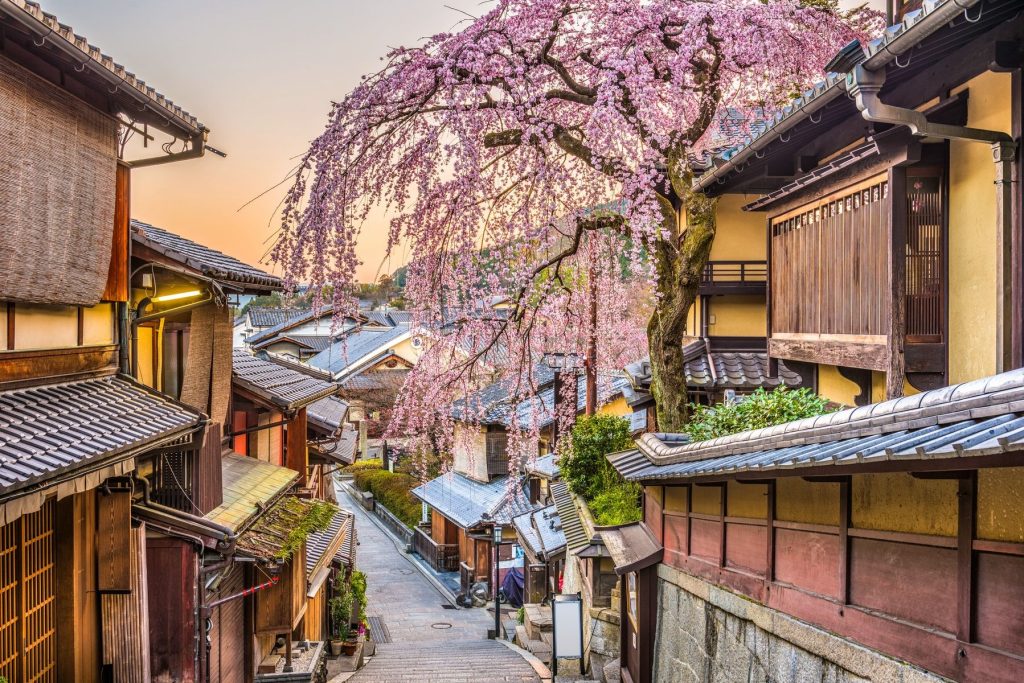
For over a thousand years, Kyoto has been the capital of Japan. During this time, it has become a repository of the best achievements of Japanese culture, art and religion. Here, temples with curved roofs are reflected in the motionless surface of the ponds, coniferous trees grow neatly, and there can be enough sights for several eastern countries. In addition, Kyoto is an urban, lively and youthful city with a lot of entertainment.
Entertainment and attractions in Kyoto
The main attraction of the city is the Gosho Imperial Palace, founded in 794, with the Sannaiden Palace, the Shishinden Ceremonial Hall, the chambers of Emperor Seiryoden and the adjoining courtyard. Tourists are also interested in Nijo Castle (1603) with the Ninomaru Inner Palace, famous for its unique system of “singing floors”, which at one time was a kind of security system, as well as the classic Japanese gardens of Ninomaru and Seiryu-en.
Other popular attractions: the magnificent moss garden of the Saiho-ji Temple, the famous rock gardens of Ryoan-ji and Sambo-In, To-ji Temples (7th-17th centuries), Katsura Palace Ensemble (17th century), Heian-Jingu (1895).), Sanjusan-gedo (1164), Nishi-Higashi, Nishi-Honganji (1272) and Tenryu-ji (16th century), as well as many imperial tombs, gardens and parks.
Gardens of Kyoto
The Kyoto Botanical Garden located next to the Kamo River is famous for its huge greenhouse, with 4.5 thousand plant species. The botanical garden consists of several areas, including a camellia garden, cherry garden, bamboo garden, bonsai exposition, European-style garden, Japanese iris garden, lotus pond, hydrangea garden, peony garden, sunken garden and others. The greenhouse, opened in 1992, features aquatic and insectivorous plants, a pineapple room, succulent plant forests, a jungle zone, desert plants, savanna plants, an orchid section, a potted houseplant section, tropical plant garden.
Parks of Kyoto
Kyoto is Japan’s most popular cherry blossom spot. The most popular places are Maruyama Park, whose pearl is the weeping cherry tree illuminated at night, and the park laid out at the Imperial Palace.
Temples of Kyoto
Kyoto, unlike other cities in the country, was practically not damaged during the Second World War. Now there are about 2000 religious places in the city: 1600 Buddhist temples and 400 Shinto shrines.
The most famous temples in Kyoto are the magnificent wooden temple Kiyomizu-dera, located on a hillside; Ryoan-ji, famous for its rock garden, Kinkaku-ji (Golden Pavilion, or Golden Temple); Ginkaku-ji (Silver Pavilion); and the Shinto shrine Heian-jingu, built in 1895 on the 1100th anniversary of the founding of the city of Heian-kyo (modern Kyoto).
